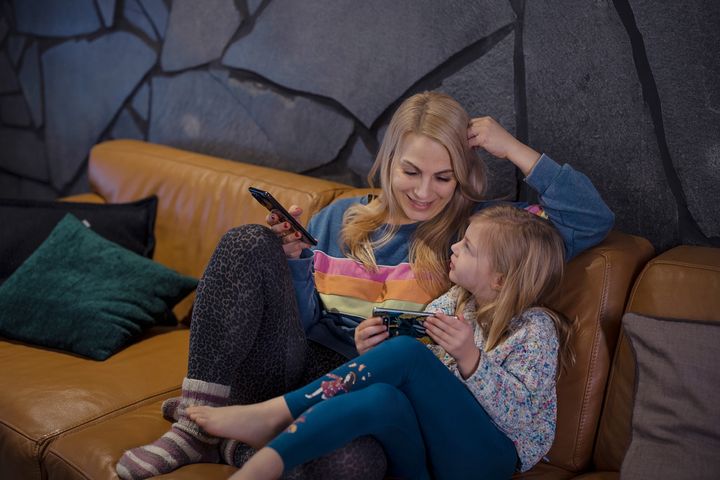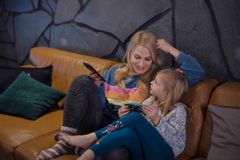An ICE contact may speed up the process of contacting your family in an emergency — how to set it up on your phone so that it can be used
Do you have a letter combination ICE written in front of a family member’s name in your phone’s address book? Perhaps you have thought that by marking the In Case of Emergency contact in this way, you make the work of authorities easier in an emergency where, for example, you are unconscious. Wrong — modern phones are so well protected that emergency personnel are not able to unlock your phone in order to access the contact data on your phone. Mikko Valtonen, Vice President, Mobile Business at DNA, explains how to set up an ICE contact on your phone so that it can be viewed without unlocking.

Thanks to smartphones, data security has been significantly strengthened. Two-step access codes, pattern locks and facial and fingerprint recognition ensure that it is significantly more difficult for an outsider to access information stored in a device. In everyday life this is an excellent thing, but in an emergency not so much. Strong locking prevents outsiders from accessing the device, including authorities carrying out rescue missions.
“On older phones, it was customary to add an ICE prefix to the address book for someone close to you who had up-to-date knowledge of the phone owner’s illnesses and medications. This was done in order to inform authorities of the person they should call first in case of an emergency. With smart phones this practice is hopelessly outdated. In case of an emergency, information stored in a contact list is not helpful unless authorities are able to see it. Fortunately, smartphones have a special function for displaying ICE data without unlocking,” Valtonen says.
Calls are made only after the rescue measures
Setting up the ICE contact correctly is likely to be beneficial only after any acute emergency medical measures. For example, the primary goal of paramedics arriving at the scene of an accident is to rescue the injured person and safeguard their health — and at this point they may not have any major need or the opportunity to search contact information stored on a smart device.
Instead, such information may be useful when urgent measures have been taken and the unconscious person was transported to the hospital. The authorities’ attempts to contact family members may well be sped up by having the necessary information conveniently available. When notifying the emergency contact person, authorities may be informed promptly, for example, whether the injured person is on any special medication or has an underlying condition such as diabetes or heart disease.
“Adding ICE contacts to your phone can ensure that the information reaches the right person in an emergency. At the same time, it is easier to provide appropriate treatment. It is one tool that allows key authorities to access useful information in an emergency. The second is more old-fashioned: you can write the contact details of your family member on a physical note and either glue it to the back cover of your smartphone or keep it in an easy-to-find place in your wallet,” Valtonen says.
How to add ICE data to your phone correctly
You can always call the emergency number, even with a locked phone. In addition, when you set up an emergency contact correctly on your smartphone, they can also be called even if the phone is locked. See below how to add the information on different devices.
Android
For Android devices, the method of adding an ICE contact varies depending on the manufacturer and system version, but the basic idea is the same. In newer system versions, it is done as explained in Google's instructions by going to Settings > About Phone > Emergency Information. You can also add text such as names, phone numbers or health information to the lock screen.
iPhone
To add an emergency contact on an Apple iPhone, follow Apple's instructions through the Health app by selecting Summary > Profile picture at the top > Medical ID > Emergency Contacts > Edit > Add Emergency Contact. For the selected contact, you can add information such as whether the person is a spouse, relative or friend. Personal health information can also be added to the Medical ID, from medical conditions to medications and allergies.
How to call an ICE contact without unlocking
On an Android phone, you can view the emergency contact when you swipe up the lock screen and click Emergency call. In the menu that is displayed, you can call the local emergency number or contact the ICE contacts specified by the owner of the phone.
On a locked iPhone, you can access the information via the Emergency button and then select Medical ID. The Medical ID button also appears when the device asks for an access code.
Further information for the media
Mikko Valtonen, Vice President, Mobile Business, DNA Plc, tel. +358 (0)44 044 5290, mikko.valtonen@dna.fi
DNA Corporate Communications, tel. +358 (0)44 044 8000, communications@dna.fi
Images
DNA is one of the leading telecommunications companies in Finland. Our purpose is to connect you to what matters most. We offer connections, services and devices for homes and workplaces, contributing to the digitalisation of society. Already for years, DNA customers have been among the world leaders in mobile data usage. DNA has about 3.7 million subscriptions in its fixed and mobile communications networks. The company has been awarded numerous times as an excellent employer and family-friendly workplace. In 2023, our total revenues was EUR 1,067 million and we employed about 1,700 people around Finland. DNA is a part of Telenor Group, a leading telecommunications company across the Nordics. More information: www.dna.fi, Facebook @DNA.fi and LinkedIn @DNA-Oyj.
Alternative languages
Subscribe to releases from DNA Oyj
Subscribe to all the latest releases from DNA Oyj by registering your e-mail address below. You can unsubscribe at any time.
Latest releases from DNA Oyj
DNA:n lokakuun 2025 myydyimmät puhelimet ja älykellot3.11.2025 08:00:00 EET | Tiedote
DNA:n lokakuun myydyimmäksi puhelimeksi nousi Applen edullisin iPhone 16e 5G. Myös Applen uutuudet säilyivät listalla, mutta tippuivat sijoituksissa jo alemmaksi. Yritysasiakkaiden puolella Samsung nousi pitkästä aikaa listan kärkeen, kun ykkössijan otti Samsung Galaxy A26 5G. Älykelloissa myydyimmät jakautuivat laajasti eri valmistajien välillä ja ensimmäisen sijan vei tällä kertaa Honor Watch 2i.
Uudet turvallisen nettiselauksen liittymät estäneet jo yli 7 miljoonaa huijausyritystä31.10.2025 10:00:00 EET | Tiedote
Uuden ajan DNA Huoleton puhelin- ja laajakaistaliittymät sekä Varma -yritysliittymät ovat herättäneet paljon mielenkiintoa. Ne sisältävät turvallisen nettiselauksen, joka estää asiakkaita joutumasta haitallisille verkkosivuille. Turvallinen nettiselaus on tehokas suoja verkossa tapahtuvia huijauksia vastaan, ja ominaisuuden avulla onkin saatu estettyä edeltävän puolivuotisen eli touko-lokakuun aikana liittymien käyttäjiltä jo 7,6 miljoonaa huijausyritystä.
New subscriptions with secure internet browsing have already blocked over 7 million scam attempts31.10.2025 10:00:00 EET | Press release
The new DNA Huoleton mobile and broadband subscriptions, as well as Varma business subscriptions, have attracted significant interest. They include secure internet browsing, a feature that prevents customers from accessing harmful websites. Secure internet browsing is an effective safeguard against online scams, and during the past six months from May to October it has already blocked 7,6 million scam attempts for subscription users.
Uusi digitaalisen turvallisuuden raportti peräänkuuluttaa pohjoismaista yhteistyötä kriittisen infrastruktuurin turvaamiseksi30.10.2025 12:30:00 EET | Tiedote
Pohjoismaiden digitaalinen turvallisuus on uudenlaisten uhkien edessä. DNA:n omistajayhtiön, norjalaisen tietoliikenneyhtiö Telenorin tänään julkaisema Nordic Digital Security 2025 -raportti korostaa, että alueen kriittisen infrastruktuurin suojaaminen vaatii entistä tiiviimpää yhteistyötä valtioiden ja yritysten välillä.
DNA Oyj:n heinä–syyskuun 2025 liiketoimintakatsaus: Liikevaihto ja kannattavuus jatkoivat kasvua29.10.2025 08:30:00 EET | Tiedote
Kuluvan vuoden kolmas neljännes oli DNA:lle taloudellisesti menestyksekäs. Heinä–syyskuussa niin liikevaihto, palveluliikevaihto, liikevoitto kuin käyttökatekin kasvoivat, kuten myös matkaviestinverkon sekä kiinteän laajakaistan liittymämäärät.
In our pressroom you can read all our latest releases, find our press contacts, images, documents and other relevant information about us.
Visit our pressroom

